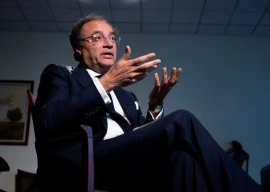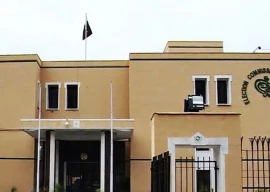
As many as 3.2 million children between the ages of five and nine years are out of school in the Punjab, United Nations Children’s Fund Education Officer (gender) Sehr Raza Qizilbash said at a UNICEF Punjab session, organised in collaboration with the School Education Department (SED) on Saturday.
The session aimed to highlight the work of the Provincial Parliamentarians Caucus formed in 2010 under the United Nations Girls’ Education Initiative (UNGEI) Punjab, as a collaborative effort by the SED and the UNICEF.
Punjab has a literacy rate of 73 per cent and primary schools net enrolment rate of 70 per cent, said Qizilbash. As many as 25 million children between the ages of six and 16 years are out of school in Pakistan, she said. It is unfortunate that 30 per cent of the children in schools stay enrolled for two years or less and only 20 per cent receive seven years of education, she said. The primary net enrolment rate is 73 per cent for boys and 67 per cent for girls.
“When we talk about education and equity, we need to consider those who have been excluded from mainstream educational institutions and opportunities,” said Qizilbash. Only 2 per cent of the GDP is allocated for education. “Parliamentarians need to be sensitised on issues of gender disparity especially in education,” said Qizilbash.
School Education Department’s efforts
SED Planning and Budget Deputy Secretary Qaiser Rasheed said retention was a bigger challenge than enrolment. Allocation for education, he said, was 1.86 per cent. “This must be increased to 4 per cent,” he said.
Key policy objectives of the department for the year 2013-2014 included achieving 100 per cent enrolment and retention, providing missing facilities at schools, up-grading girls’ schools, information technology initiatives and the construction of schools in new housing societies, said Rasheed said.
He said most elementary schools did not have IT labs. There was a budgetary allocation of Rs250 million for that purpose.
Rasheed said that the department hoped to provide all missing facilities in girls’ schools, except for classrooms. “The cost of additional classrooms is far more than what we can bear at the moment,” he said. Missing facilities that would be provided include toilets, drinking water, electricity and furniture.
“Our objectives cannot be achieved till all segments of the society are actively engaged,” said SED Planning and Budget Additional Secretary Rana Hassan Akhtar. Public schools accommodated a larger number of children and were a lot cheaper than private schools. “Their [public schools] role cannot be taken up by private schools, which lack both the resources and cost-effectiveness to cater to the large number of out-of-school children,” he said.
Parliamentarian’s deliberations
More than 30 members of the provincial assembly participated in the session. MPA Sunila Ruth said there was a need to create awareness regarding education. “If we want to educate the girl child, we need to sensitise and educate the entire community,” she said.
Sardar Waqas Hassan Moakkal of Kasur said education needed to be prioritised. “The women in my district begged me to keep vaccination teams away from their children,” he said, “They thought that they or their children would get sick.” He said those women were unaware of the harm their actions could cause.
MPA Syed Abdul Aleem of Dera Ghazi Khan stressed the need for technical education and skills training. “Women form a major part of the workforce in our area,” he said, “They need to be imparted marketable skills at an early age, along with general education.”
MPA Mohammad Rafique from Toba Tek Singh said economic disparity led to a lack of educational opportunities for children, especially girls.
Parliamentarian’s Caucus
MPA Ayesha Javed, a former member of the Parliamentarians Caucus, said that the platform was very effective, especially for enhancing budgetary allocations for education. She said the budgetary allocation for education had increased from Rs9 billion to Rs14.5 billion during 2010-2011, the year the caucus was formed. The Punjab Parliamentarians Caucus began in 2010 under the UNGEI and the National Parliamentarians Caucus was formed in August 2011. They aim to sensitise and involve parliamentarians in working for education and equity, by addressing policy and implementation requirements.
Published in The Express Tribune, July 15th, 2013.























1707659462-0/image-(1)1707659462-0-270x192.webp)






1713853507-0/MalalaHilary-(2)1713853507-0-270x192.webp)








COMMENTS
Comments are moderated and generally will be posted if they are on-topic and not abusive.
For more information, please see our Comments FAQ